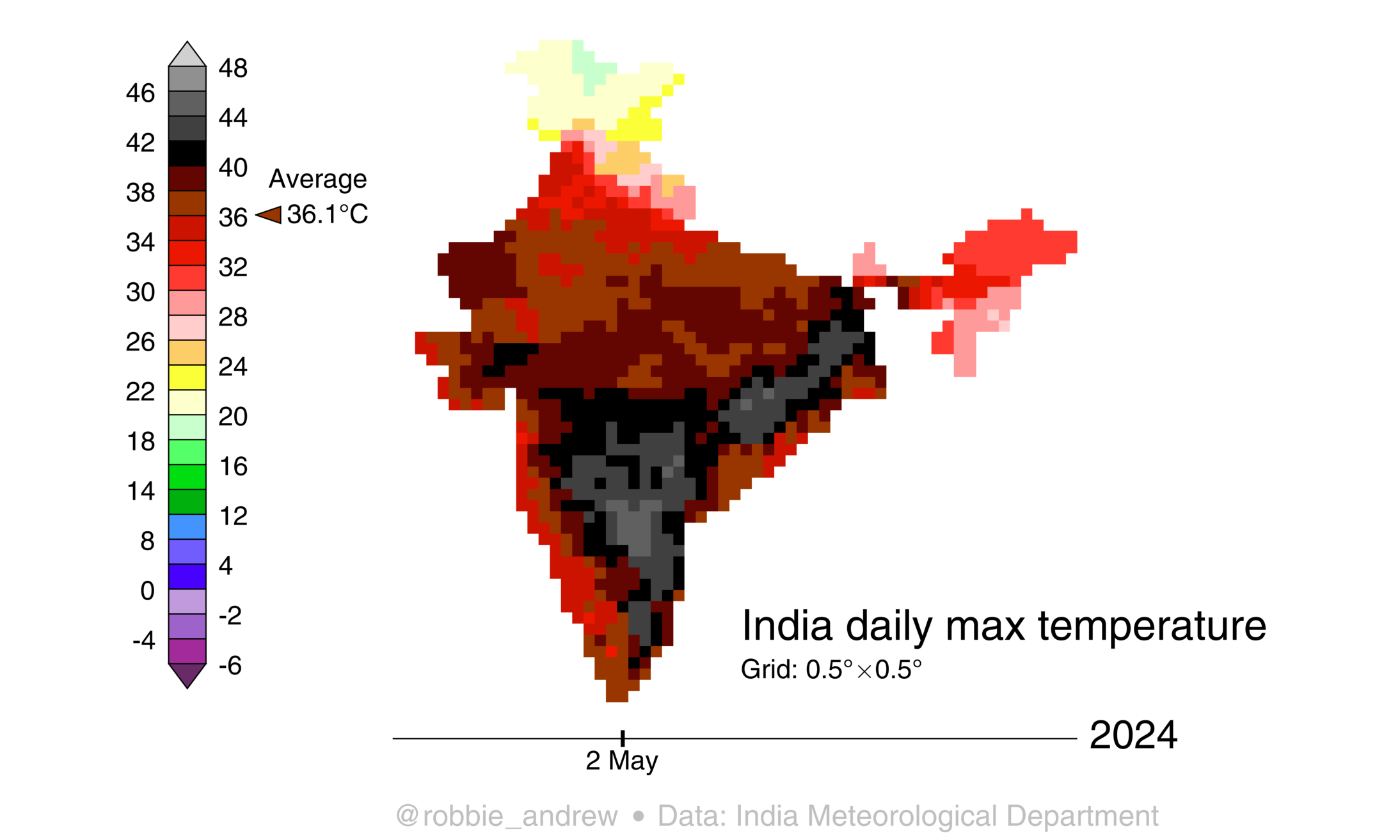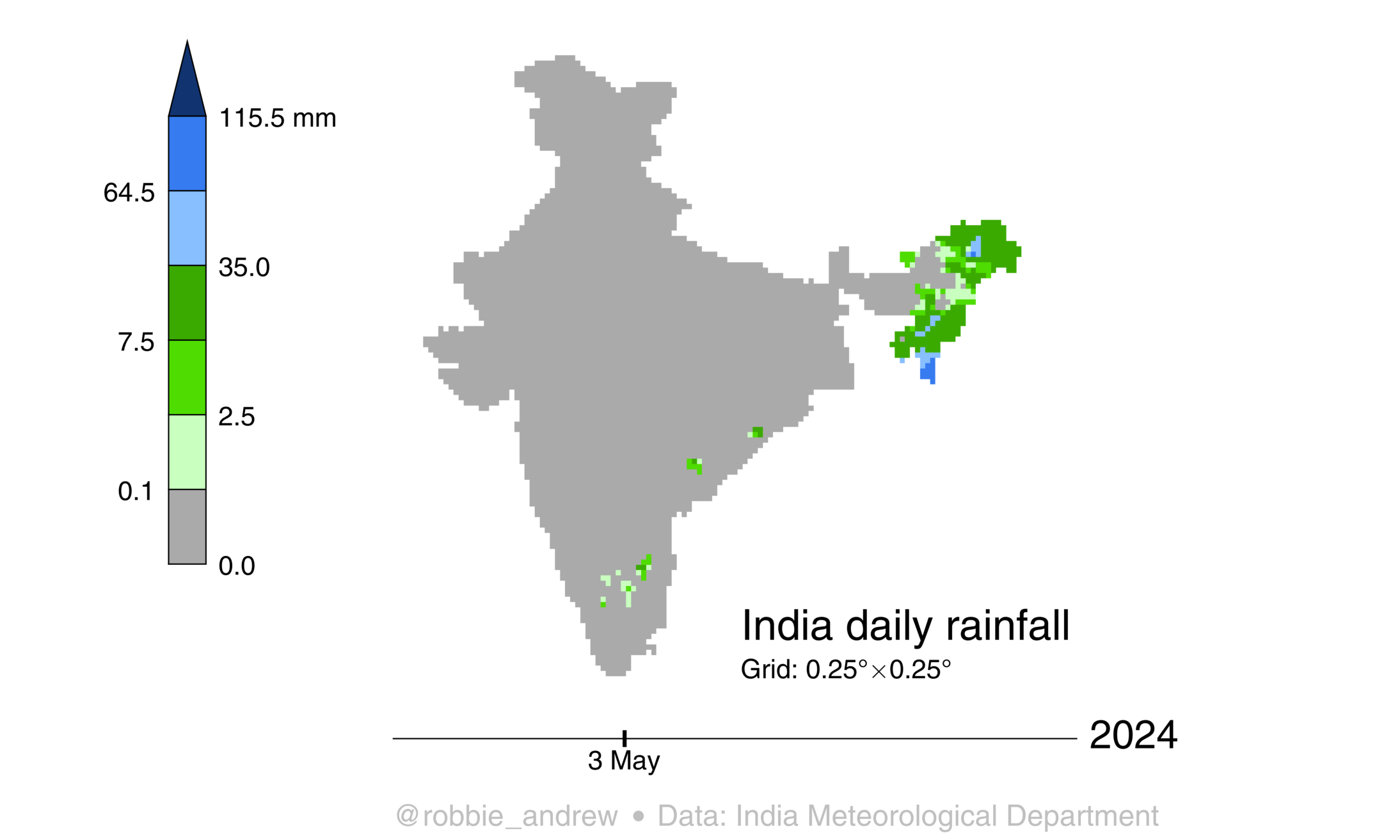Index | Robbie Andrew, CICERO | Contact me
Jump to section: Activity data | Coal imports | Power capacity | Daily power | State-level | Coal stocks | Climate | Vehicle sales | Emissions
Indian energy and emissions data
Last update: 3 July 2025
The figures here show just some examples of the data present in the CSV files. See also Indian energy: Archive materials.
* The last time India counted its population in a census was in 2011; the next census is expected to commence before the end of 2024.
Monthly activity data
202 monthly time series in one file.
These monthly data cover coal, oil, natural gas, cement production, and more, and are collated from many different sources as described in the JSON metadata file.
CSV data file | JSON metadata file | Zip archive (both files)
Monthly coal import data
Monthly imports of coal by HS code and country (top 16 countries and total) in tonnes.
CSV data file | JSON metadata file | Zip archive (both files)
National electricity capacity data
Daily electricity generation data
There are two sources of daily electricity generation data. POSOCO covers the national grid, while CEA has a slightly broader coverage and therefore shows higher numbers. However, CEA data have not been published in some periods during the pandemic.
Note that India's reporting typically uses units of MU and BU, short for "million units" and "billion units", respectively, where one unit is 1 kWh, and therefore 1 BU is 1 TWh.
GRID-INDIA (POSOCO)
Generation by type and demand at regional level and demand at state level.
Data are available from 2 January 2013, although 112 days are missing because of missing or unreadable reports.
CSV data file | JSON metadata file | Zip archive (both files)
CEA
Generation by type at national level.
Data are available from 1 April 2018, although 74 days are missing. Breakdown by renewable type is available from 1 July 2019, with 21 days missing.
CSV data file | JSON metadata file | Zip archive (both files)
State electricity capacity and generation data
See also https://zenodo.org/record/4542834.
Conventional capacity CSV data file | Conventional generation CSV data file | Renewables capacity CSV data file
CEA: Daily power station coal stocks
The raw data include many gaps and a number of implausible spikes. The CSV file here includes both the raw data and a processed series that fills gaps and removes spikes. For details, see my paper from 2020.
CSV data file | JSON metadata file | Zip archive (both files)
Climate data
The India Meteorological Department publishes daily 0.5°x0.5° grids of maximum daily temperatures over India starting in 2015 and 0.25°x0.25° grids of daily rainfall starting in 1901.
New vehicle registrations
For other countries and more figure formats, view my global page.
Monthly CO2 emissions
These are my estimates based on the activity data presented above and using the method described in detail in the paper.
CSV data file | JSON metadata file | Zip archive (both files)
Cement production
India publishes cement production monthly, but for estimating emissions it's the amount of cement clinker that is important, and national statistics are not kept. Here I've assembled data from a number of sources to try to constrain estimates on clinker production.
These data are annual, while monthly cement production statistics are included in the "Monthly activity data" file (above).
See also "Global CO2 emissions from cement production" at https://doi.org/10.5281/zenodo.831454.

